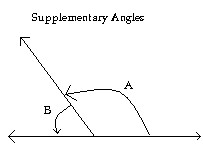Solve the problem.An insurance company says that at age 50 one must choose to take  at age 60, $30,000 at 70, or $50,000 at 80 ($0 death benefit). The probability of living from 50 to 60 is .82, from 50 to 70,
at age 60, $30,000 at 70, or $50,000 at 80 ($0 death benefit). The probability of living from 50 to 60 is .82, from 50 to 70,  , and from 50 to 80, 0.46. Find the expected value at each age.
, and from 50 to 80, 0.46. Find the expected value at each age.
A. 60 - $8200
70 - $24,600
80 - $41,000
B. 60 - $8200
70 - $13,800
80 - $23,000
C. 60 - $6100
70 - $18,300
80 - $23,000
D. 60 - $8200
70 - $18,300
80 - $23,000
Answer: D
You might also like to view...
Given functions f and g, determine the domain of f + g.f(x) = 4x + 5,g(x) = 3x + 3
A. (-?, -4) or (-4, ?) B. (-?, 0) or (0, ?) C. (0, ?) D. (-?, ?)
Find the relative maxima and relative minima, if any, of the function. Otherwise, answer none.
?

What will be an ideal response?
Solve.Angle A and angle B are supplementary angles and angle A is 25° less than four times angle B. Find the measures of angle A and angle B.
A. A = 149°, B = 31° B. A = 164°, B = 16° C. A = 139°, B = 41° D. A = 128.3°, B = 51.7°
Use the information given about the angle ?, to find the exact value of the indicated trigonometric function.sin ? = -  , ? in quadrant IV Find cos 2?.
, ? in quadrant IV Find cos 2?.
A. - 
B. 
C. - 
D. 